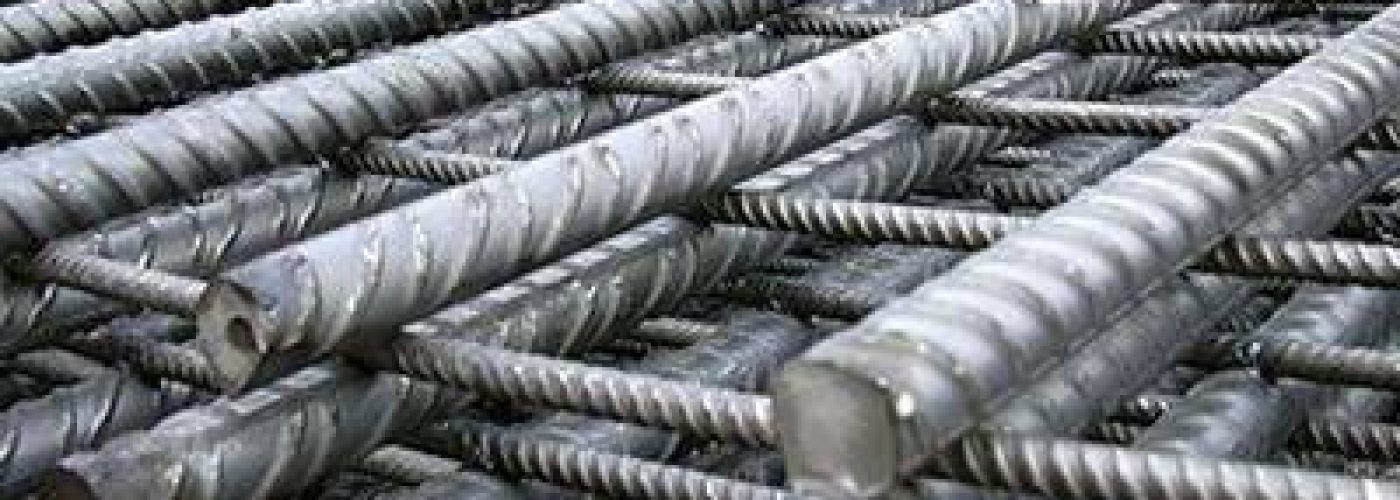Every construction project relies on materials that meet exacting standards. When structures demand strength and longevity, reinforcing steel becomes non-negotiable. Yet many project managers discover too late that their supplier choice impacts timelines, budgets, and compliance records.
Selecting a reinforcing steel supplier extends beyond comparing price lists. This decision shapes project success from foundation to completion. Understanding what separates reliable suppliers from the rest helps contractors avoid costly delays and quality issues.
Quality Standards Cannot Be Compromised
Reinforcing steel forms the skeleton of concrete structures. Substandard materials create vulnerabilities that surface years after construction finishes. Buildings designed to last decades can develop critical weaknesses when inferior steel reinforcement fails to perform.
British Standards and European norms define minimum requirements for reinforcing steel. Suppliers must demonstrate compliance through independent testing and certification. Contractors should verify that materials arrive with complete documentation, including mill certificates and test reports.
Third-party certification provides additional assurance. Look for suppliers maintaining ISO 9001 quality management systems. These frameworks ensure consistent production standards and traceable quality control. Compliance of construction products remains under scrutiny following recent regulatory changes, making verified supplier credentials more important than ever.
Surface characteristics matter too. Reinforcing bars should exhibit clean surfaces free from excessive rust, oil, or loose scale. While light surface rust proves acceptable, heavy corrosion compromises bond strength with concrete. Dimensional accuracy affects spacing and concrete cover, directly impacting structural performance.
Delivery Reliability Keeps Projects on Schedule
Construction schedules operate on tight margins. Material delays cascade through project timelines, affecting multiple trades and pushing back completion dates. Late deliveries force crews to wait idle, inflating labour costs while contractors scramble to reorganise workflows.
Reliable suppliers maintain adequate stock levels and commit to realistic delivery windows. They communicate proactively about potential delays rather than leaving project managers guessing. Established suppliers typically operate robust logistics networks, enabling them to service multiple sites efficiently.
Consider suppliers offering flexible delivery options. Some projects benefit from phased deliveries that match construction progress, reducing on-site storage requirements. Others need just-in-time delivery to minimise material handling. Discussing your specific needs during supplier selection prevents frustrating mismatches later.
Weather and site access conditions complicate deliveries. Suppliers familiar with local conditions better anticipate challenges and plan accordingly. Experience delivering to constrained urban sites differs markedly from serving open rural developments.
Technical Support Adds Substantial Value
Reinforcing steel procurement involves more than ordering tonnage. Projects require accurate scheduling, precise cutting, and complex bending to match structural drawings. Suppliers providing technical services help contractors avoid measurement errors and fabrication mistakes.
Detailed bar bending schedules translate engineering drawings into practical fabrication instructions. Creating these schedules requires expertise in reading structural plans and understanding steel fabrication tolerances. Suppliers offering scheduling services save contractors significant time while reducing risk of costly errors.
Prefabrication capabilities enable suppliers to deliver ready-to-install reinforcement cages and assemblies. These arrive at sites pre-bent and tied, dramatically reducing on-site labour requirements. Aluminium suppliers have long demonstrated how manufacturing support streamlines construction processes—the same principle applies to steel reinforcement.
Estimation services help quantity surveyors verify material requirements. Experienced suppliers spot discrepancies in takeoffs and suggest optimisations that reduce waste. Their familiarity with standard construction details often reveals opportunities to simplify reinforcement arrangements without compromising strength.
Compliance Documentation Protects All Parties
Building regulations demand comprehensive documentation proving materials meet required standards. Missing or inadequate paperwork creates compliance headaches during inspections and handover. Proper documentation protects contractors, clients, and building users.
Every delivery should include certification packages comprising:
Mill certificates verify steel composition and mechanical properties. These documents confirm material meets specified grade requirements and originate from approved production facilities. Retain these certificates for building control inspections and future reference.
Test reports demonstrate physical properties like tensile strength and elongation. Independent laboratories conduct these tests according to standardised methods. Reports should clearly identify tested material batches matching delivered goods.
Conformity declarations state products comply with applicable standards and regulations. Manufacturers issue these documents certifying their products’ suitability for intended applications.
Suppliers maintaining proper documentation systems simplify compliance processes. They understand regulatory requirements and provide complete paperwork without prompting. This attention to administrative details reflects broader commitment to quality and professionalism.
The Building Safety Act introduced enhanced documentation requirements for higher-risk buildings. While primarily focused on fire safety, the Act’s emphasis on information management and traceability applies to all building materials. Forward-thinking suppliers already align their processes with these evolving expectations.
Geographic Location Influences Service Quality
Supplier proximity affects more than delivery costs. Local suppliers better understand regional construction practices and building requirements. They respond faster to urgent orders and provide more flexible service for last-minute adjustments.
Contractors working across wide geographic areas benefit from suppliers operating multiple locations. Regional branches maintain stock closer to project sites while head offices provide centralised procurement and technical support. This combination delivers efficiency without sacrificing service quality.
Transport costs increase with distance, potentially offsetting cheaper unit prices from distant suppliers. Factor delivery charges into total cost comparisons. Additionally, longer delivery distances introduce more variables that can disrupt schedules—traffic, weather, vehicle breakdowns.
Relationships matter in construction. Face-to-face interactions with local supplier representatives build understanding and trust that phone calls alone cannot match. When problems arise, resolving them proves easier with suppliers genuinely invested in regional construction communities.
For example, Sydney Reo serves the Greater Sydney region, providing local contractors with accessible service and rapid response times. This geographic focus allows them to understand specific regional requirements and maintain strong customer relationships.
Pricing Structures Affect Project Budgets
Competitive pricing matters, but lowest quotes don’t always deliver best value. Understanding how suppliers structure their pricing reveals true project costs and helps avoid budget surprises.
Some suppliers quote base prices then add surcharges for cutting, bending, and delivery. Others offer bundled pricing including these services. Comparing quotes requires understanding exactly what each price covers. Request detailed breakdowns showing unit costs plus all additional charges.
Volume discounts reward larger orders but may encourage over-ordering. Calculate whether discount savings exceed costs of storing excess material or disposing of waste. Right-sizing orders often provides better value than maximising discounts.
Payment terms impact cash flow. Longer credit periods help contractors manage working capital, particularly when clients delay progress payments. Compare standard payment terms alongside pricing when evaluating suppliers.
Price stability matters throughout project duration. Materials contracts should specify whether quoted prices hold for the entire project or can fluctuate with market conditions. Fixed pricing eliminates uncertainty but may cost more initially. Index-linked pricing shares market risk between parties.
Range and Availability Support Diverse Needs
Projects require various reinforcing products: straight bars in multiple diameters, welded mesh panels, prefabricated cages, and specialty items. Suppliers maintaining comprehensive inventories provide one-stop convenience that simplifies procurement and accounts payable processes.
Standard products like 8mm to 32mm diameter bars and common mesh types should be readily available. Specialty items—high-tensile bars, corrosion-resistant coatings, seismic reinforcement systems—may require advance ordering. Confirm availability for unusual items early in project planning.
Stock availability directly affects lead times. Well-stocked suppliers fulfill orders within days rather than weeks. Marginal suppliers constantly place contractors on back-order, creating scheduling uncertainty. Inquire about typical stock levels and lead times for your required products.
Substitute materials sometimes prove necessary when specified products become unavailable. Knowledgeable suppliers suggest appropriate alternatives and obtain engineering approval for substitutions. This problem-solving approach keeps projects moving despite supply disruptions.
Environmental Considerations Increasingly Matter
Sustainability targets influence material selection across construction projects. Steel production carries significant environmental impact, making supplier practices increasingly relevant to project environmental performance.
Recycled content reduces primary resource consumption. Modern steel production incorporates substantial recycled scrap, with some products containing 90% recycled material or more. Suppliers should provide environmental product declarations quantifying recycled content and embodied carbon.
Manufacturing efficiency affects overall environmental footprint. Energy-efficient production facilities and logistics optimisation reduce greenhouse gas emissions per tonne of delivered steel. Suppliers committed to environmental performance track and report these metrics.
Local sourcing reduces transportation emissions while supporting regional economies. Balancing local preference against product availability and pricing requires thoughtful evaluation. Sometimes optimal solutions involve hybrid approaches—local suppliers working with national manufacturers.
Waste management practices at fabrication facilities deserve consideration. Optimised cutting patterns minimise offcuts, while effective recycling programs recover scrap steel for reprocessing. These practices reduce environmental impact while demonstrating supplier commitment to sustainability.
Safety Culture Reflects Operational Excellence
Supplier safety records provide insight into overall operational standards. Companies maintaining excellent safety performance typically demonstrate attention to detail across all business areas.
Request safety statistics including accident frequency rates and lost-time injury records. Reputable suppliers readily share this information, viewing safety performance as a competitive advantage. Reluctance to discuss safety history raises concerns about transparency and accountability.
Visit supplier facilities when feasible. Observe housekeeping standards, equipment maintenance, and employee behaviour. Well-organised, clean facilities staffed by properly equipped workers signal professional operations. Chaotic warehouses with safety shortcuts indicate broader operational weaknesses.
Safety extends beyond supplier premises to delivery drivers and site conduct. Drivers should possess proper licensing and training for materials handling equipment. On-site behaviour must align with project health and safety requirements.
Relationship Approach Determines Long-term Success
Transactional relationships based solely on lowest price create instability. True partnerships develop when suppliers invest in understanding customer needs and work collaboratively to solve problems.
Responsive communication characterises quality suppliers. They answer queries promptly, provide clear information, and follow through on commitments. Communication failures often signal broader organisational dysfunction.
Problem resolution approaches reveal supplier character. Issues inevitably arise—damaged deliveries, documentation errors, scheduling conflicts—and suppliers who focus on solutions rather than blame help maintain productive relationships through these challenges.
Continuous improvement mindset benefits customers directly. Suppliers regularly reviewing processes and seeking feedback identify opportunities to enhance service. Stagnant suppliers fall behind evolving industry standards and customer expectations.
Regular business reviews strengthen partnerships. Discussing project performance, identifying improvement areas, and planning for upcoming needs creates mutual accountability. These conversations prevent small issues from escalating into relationship-damaging problems.
Making Informed Supplier Selections
Choosing reinforcing steel suppliers requires systematic evaluation across multiple criteria. Create assessment frameworks weighing quality, delivery reliability, technical support, compliance, pricing, and relationship factors according to project priorities.
Develop approved supplier lists through thorough vetting processes. Prequalification questionnaires gather relevant information about capabilities, certifications, and references. Site visits and reference checks validate claimed capabilities.
Trial periods allow contractors to evaluate suppliers before committing to major projects. Start with smaller orders to assess responsiveness, quality, and service delivery. Successful trials build confidence for larger engagements.
Maintain relationships with multiple qualified suppliers. Relying on single sources creates vulnerability to supply disruptions, price increases, and service deterioration. Multiple suppliers foster healthy competition while providing backup options.
Document experiences systematically. Track delivery performance, quality issues, pricing trends, and service quality. These records inform future procurement decisions and provide an objective basis for supplier reviews.
Building Projects Built to Last
Reinforcing steel selection shapes structural integrity for generations. Projects succeed when contractors partner with suppliers demonstrating commitment to quality, reliability, and service excellence. Thoughtful supplier evaluation prevents compromises that undermine project success.
Taking time to assess suppliers across relevant criteria pays dividends throughout project lifecycles. Quality materials delivered reliably with proper documentation and technical support enable contractors to meet schedules, budgets, and performance standards.
Construction projects demand materials that perform under pressure—literally and figuratively. Selecting suppliers who understand these demands and deliver accordingly transforms procurement from potential liability into competitive advantage. Projects built on solid supplier relationships deliver solid results.





